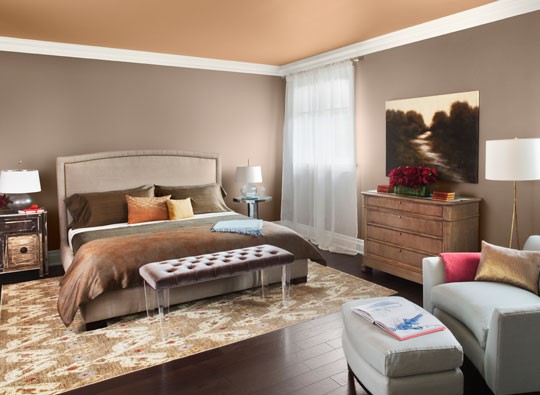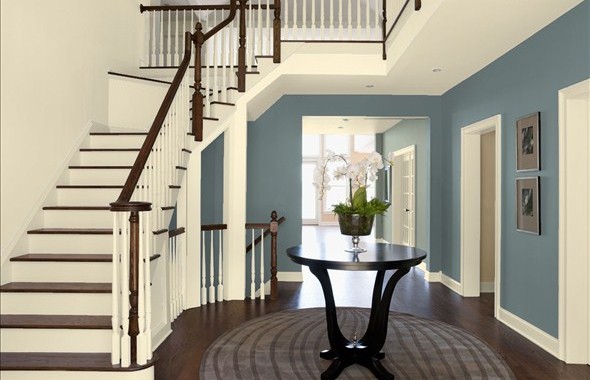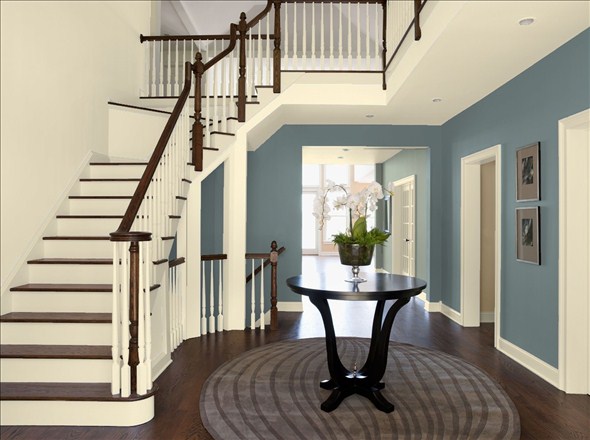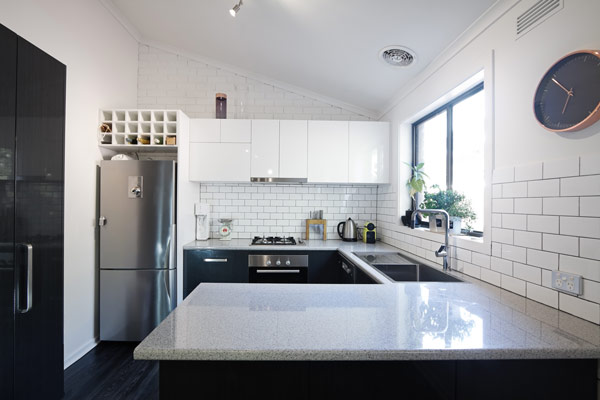 Subway tile backsplashes are a growing trend in kitchens and baths and can make for a gorgeous, clean finish.
Subway tile backsplashes are a growing trend in kitchens and baths and can make for a gorgeous, clean finish.
By taking on some of the work yourself during your kitchen or bath remodel, you can save money and have fun in the process! Installing a subway tile backsplash is a simple project for any DIYer.
Download our free kitchen planning guide.
In this DIY, we’ll help you learn how to install a kitchen or bath subway tile backsplash in 7 simple steps:
Materials & Tools
- Subway tiles
- Tile spacers
- Tile saw
- Grout
- Grout sealer
- Wall tile mastic or adhesive
- Notched trowel
- Squeegee or tile float
- Sponge
- Level
7 Easy Steps to Installing a Subway Tile Backsplash
Step 1: Apply the Mastic
Cover the surrounding area to protect adjacent surfaces.
Begin by applying the thin-set adhesive or mastic to the wall using a notched trowel while tilted at about a 45-degree angle, moving in the same direction. Use a thinner notch with this adhesive so you don’t have build-up and unevenness behind the tile itself. Create consistent ridges of the adhesive on the wall. Only apply as much adhesive as you can cover in 10 or 15 minutes.
Smooth over or knock down the thin-set to get rid of the comb marks. Otherwise, you’ll see the comb marks through the tile. The trick is to do this without changing the depth of the thin-set on the wall. Use spacers to make sure the tiles are set in a uniform pattern.
Step 2: Set the Tile
Set the tile into the adhesive. Install any border tile first, then position the sheets of subway tile on the wall next to the border. Align your outer lower tile flush with the edge of the countertop and press into the mastic. Work horizontally, placing your second tile next to your first and adding 2 tile spacers in between them.
Clean out any mastic that was squeezed in between the tile (a toothpick or a knife will work). This will make it easier for you in the long-run.
Step 3: Cut Your Tile
Once you are done with the first row, you’ll start on the second row. Remember, you’re installing subway tile so you’ll want them to be staggered. You can cut your tiles in half using your tile saw.
Step 4: Tackling an Obstacle
When you’re working around an obstacle such as an outlet, measure the distance between the electrical outlet and the last laid tile. Subtract the length of your space (most likely 1/8 of an inch), and then mark a tile for cutting.
Cut the tile along your marked line. A tile wet saw makes this project much quicker and easier with better results than other tile cutting methods. You’ll want your tile to be hidden under the switch plates, so make your tile as close the electrical outlet as you can. Use a level to make sure you’re on track and tiling in a straight line.
Step 5: Let it Sit
Once the tiles are installed, let the mastic set up overnight.
Step 6: Add the Grout
Once the mastic has dried completely, remove the tile spacers. It’s now time to add the grout!
Tape off any edges you don’t want grout to go, including cabinets, outlets and walls.
Mix the grout according to the package. The consistency should be similar to peanut butter.
Using a tile float, apply the grout to the backsplash. Use the same 45-degree angle to work the grout into all the crevices. Work in 2-feet to 3-feet spaces.
When you spread the grout on with the float, you’ll want to apply pressure into the tile spaces themselves so you are squeezing the grout completely into the spaces to prevent cracking and flaking over time. Run the grout line in multiple directions.
Step 7: Sponge Off the Grout
Once you have applied the grout to the tile spaces, it’s time to sponge off the grout from the tile themselves. Wet the sponge with water and ring out most of the water.
Begin wiping down the grout with the sponge. It’s a messy job, so you’re going to have to ring out the sponge quite a few times.
Get the tiles mostly cleaned of grout and then let it sit. Once the gout has dried completely, you’ll be able to totally clean the tiles. Make sure you let it sit before completely wiping off the grout or else you will begin to pull the grout out of the tile spaces!
Use the terry cloth side of your sponge for your final wipe-down before allowing the grout to dry completely. You’ll want to wipe down your grout about 5 times before letting it dry completely.
Step 8: Admire Your Hard Work
Now that you’re done, step back and admire your hard work!
Allow at least four hours for the grout to cure.
Congratulations! You’re an expert at installing subway tiles! Now get to work and make your kitchen or bathroom look gorgeous.

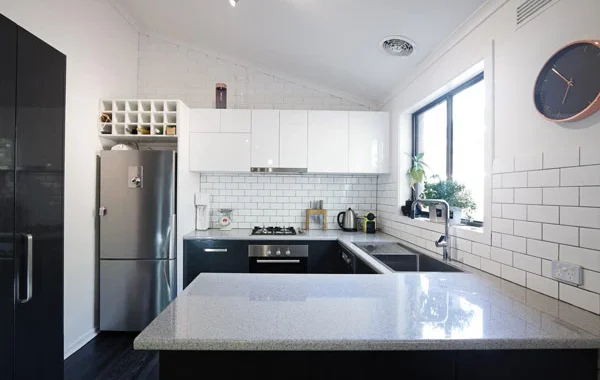
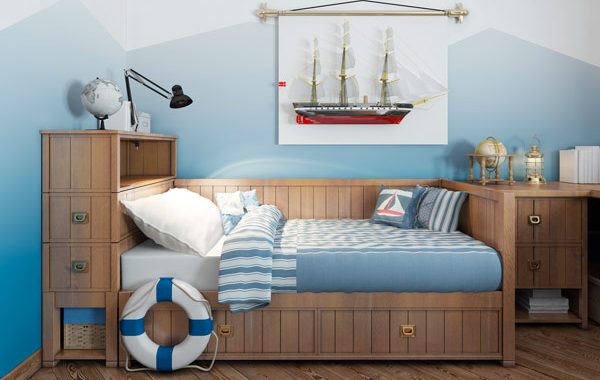
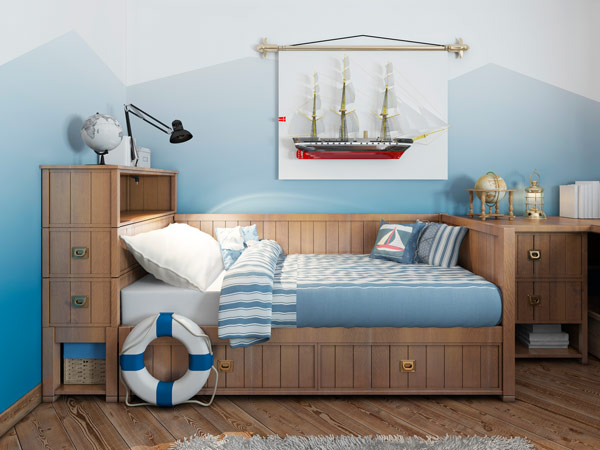
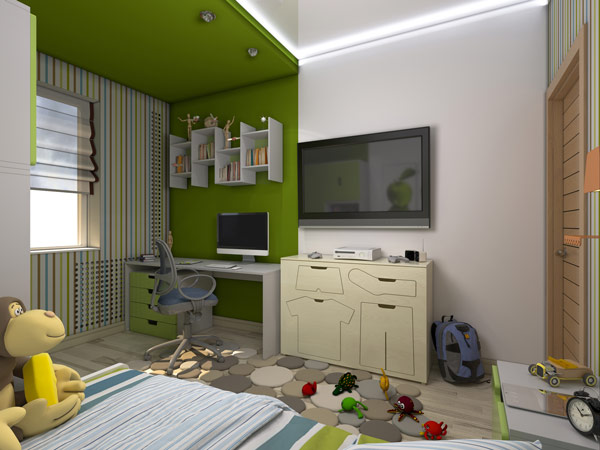 Add interest to the room by breaking away from the idea of a single, solid color.
Add interest to the room by breaking away from the idea of a single, solid color.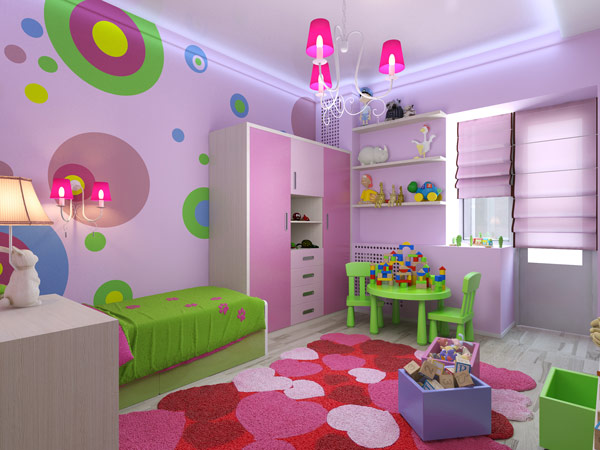 You don’t have to be an artist to add images to the walls of your kid’s bedroom. Use stencils, which can be bought or homemade. For homemade stencils, cut a shape out of paper or cardboard. For smaller images, you don’t have to draw anything: you can print from your computer and then just cut along the outline.
You don’t have to be an artist to add images to the walls of your kid’s bedroom. Use stencils, which can be bought or homemade. For homemade stencils, cut a shape out of paper or cardboard. For smaller images, you don’t have to draw anything: you can print from your computer and then just cut along the outline.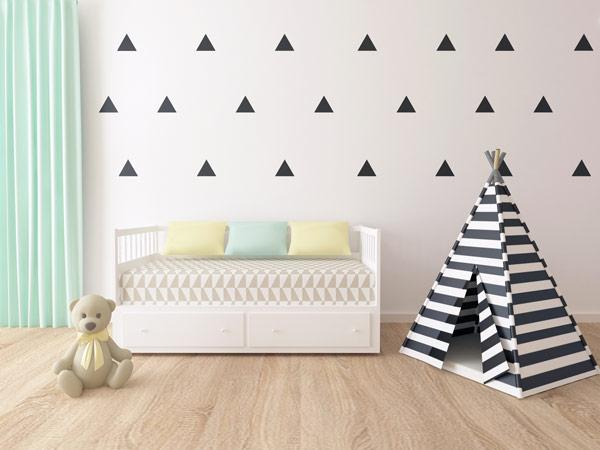 Feeling ambitious? You’re certainly not limited to a few accents. Many kids enjoy having a themed room. What does your child enjoy the most? Can you create a bedroom that reflects this theme?
Feeling ambitious? You’re certainly not limited to a few accents. Many kids enjoy having a themed room. What does your child enjoy the most? Can you create a bedroom that reflects this theme?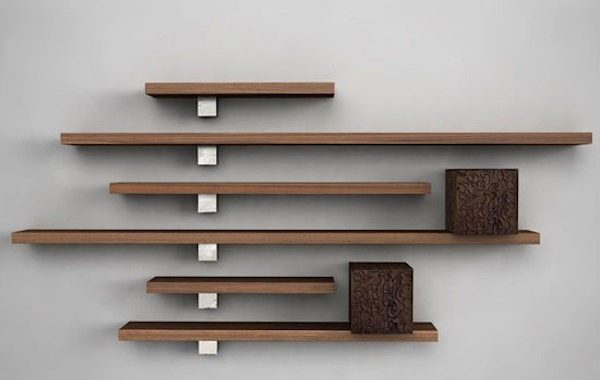
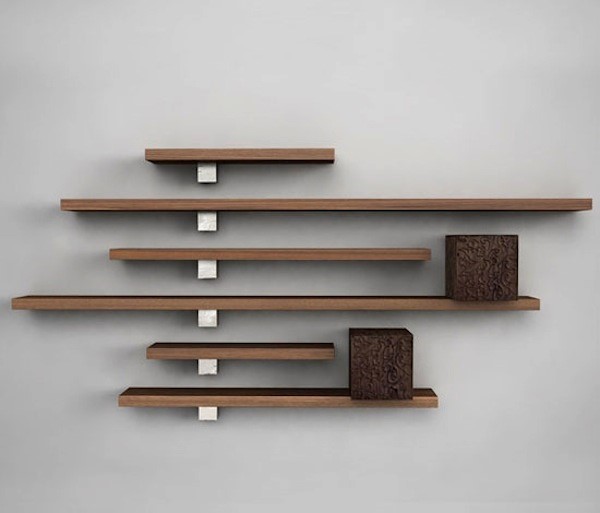 Floating shelves are an elegant way of displaying collectibles, photos, travel mementos, or other decorations. This project is great for any DIY beginner because it’s simple, inexpensive and doesn’t take very long to make!
Floating shelves are an elegant way of displaying collectibles, photos, travel mementos, or other decorations. This project is great for any DIY beginner because it’s simple, inexpensive and doesn’t take very long to make!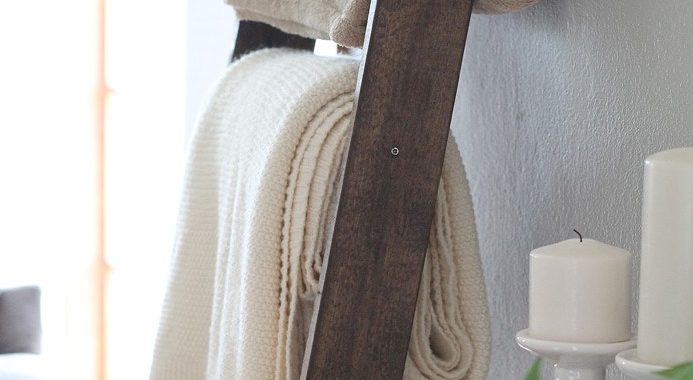
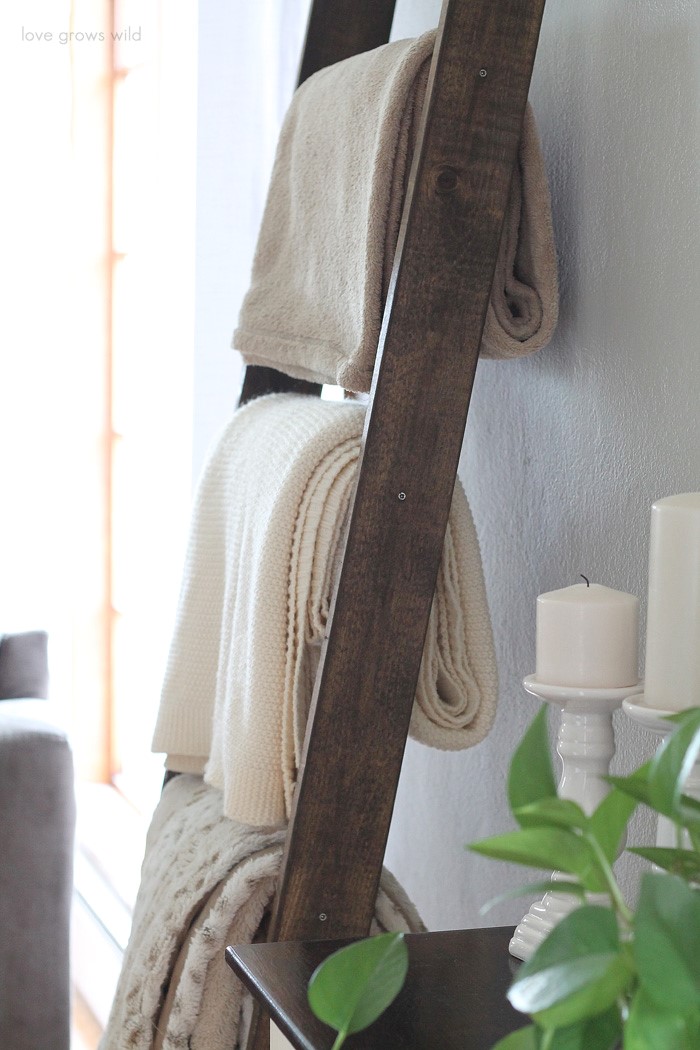
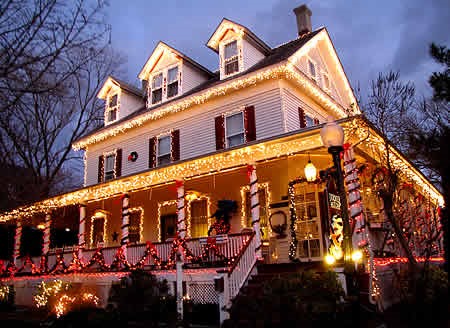
 Are you looking to light up the neighborhood? Create a sparkling light display each night during the holiday season and be the talk of the town.
Are you looking to light up the neighborhood? Create a sparkling light display each night during the holiday season and be the talk of the town.
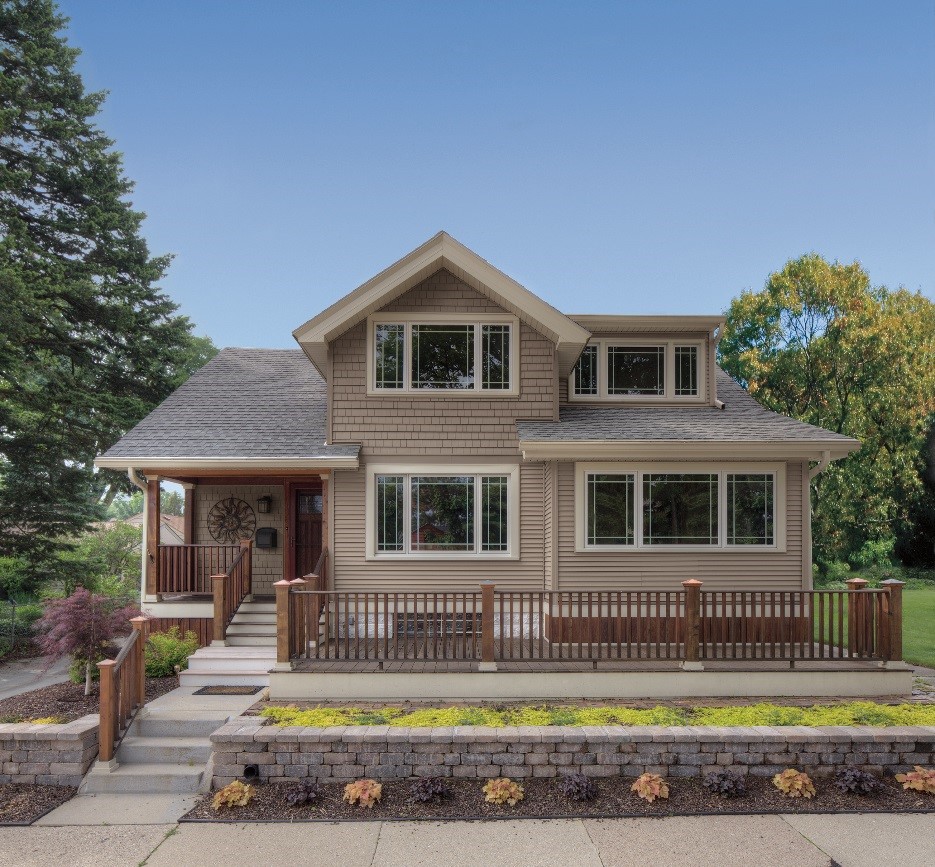 Whether your home is brand new or in need of an update, the best way to make it stand out on the curb is with a beautiful coat of
Whether your home is brand new or in need of an update, the best way to make it stand out on the curb is with a beautiful coat of  These are time-tested hues that work well against green lawns and gardens, and complement reddish brick fireplaces and roofs. You can add more impact by using darker or lighter variations of the main house color to accent things like window frames, shutters and trim.
These are time-tested hues that work well against green lawns and gardens, and complement reddish brick fireplaces and roofs. You can add more impact by using darker or lighter variations of the main house color to accent things like window frames, shutters and trim.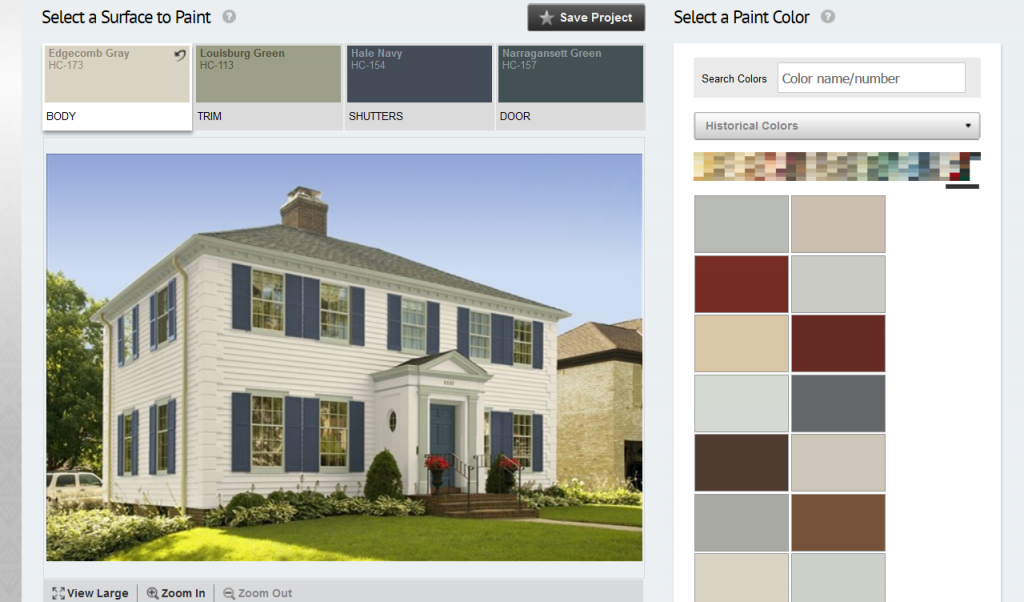 Not sure what your final color scheme will look like? Looking for a way to test out some wild ideas? Check out this great tool from Benjamin Moore! Paint your home online and see how colors will look before making a purchase with the
Not sure what your final color scheme will look like? Looking for a way to test out some wild ideas? Check out this great tool from Benjamin Moore! Paint your home online and see how colors will look before making a purchase with the 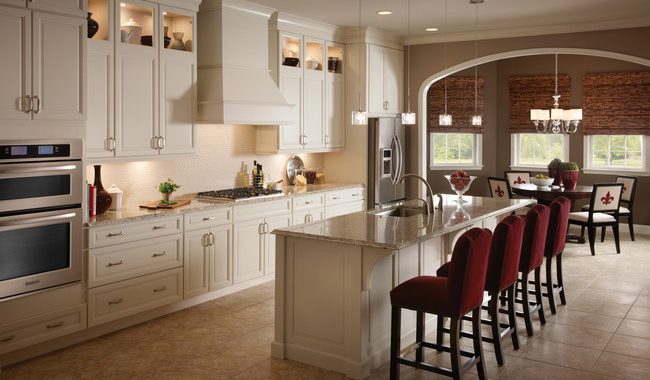
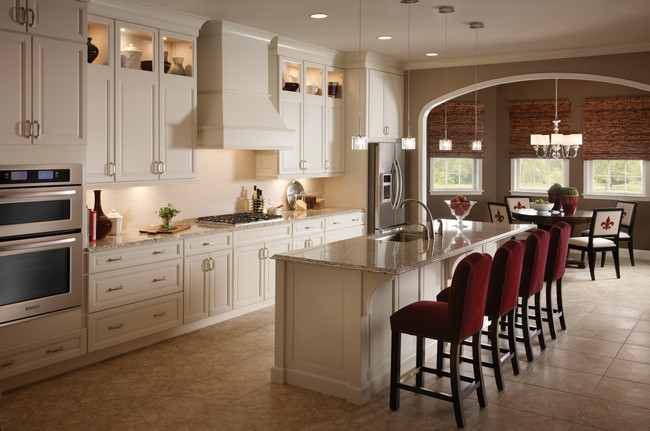
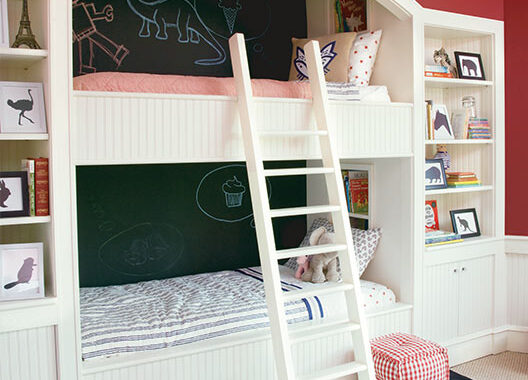
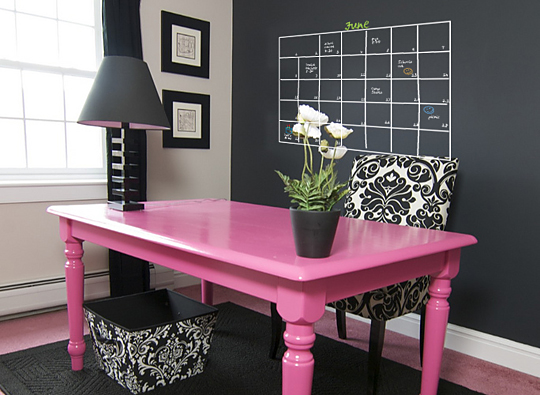
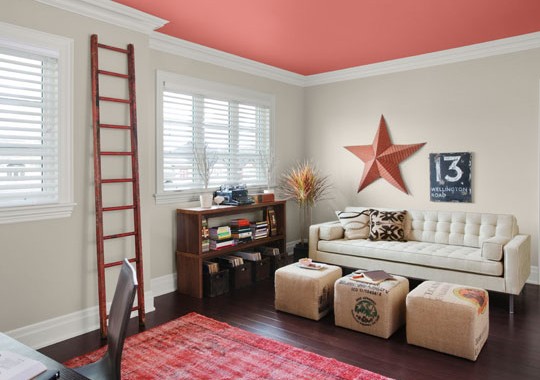
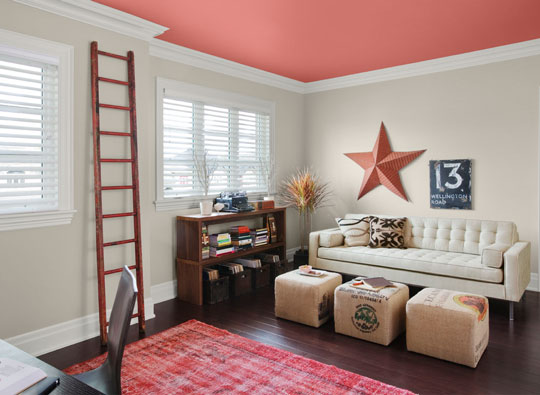
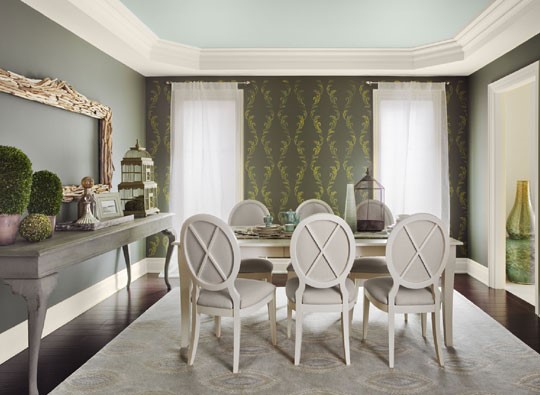 Many designers love the idea of an accent wall. Well, why not make the accent wall your ceiling? An unexpected pop of color on the ceiling in a room with neutral colored walls can add personality and charm to a room. If you need help deciding on a color, just look to the furnishings and other room elements for inspiration and choose a color that complements them. Don’t be afraid to stock up on color samples to get the best idea of how different combinations will work.
Many designers love the idea of an accent wall. Well, why not make the accent wall your ceiling? An unexpected pop of color on the ceiling in a room with neutral colored walls can add personality and charm to a room. If you need help deciding on a color, just look to the furnishings and other room elements for inspiration and choose a color that complements them. Don’t be afraid to stock up on color samples to get the best idea of how different combinations will work.